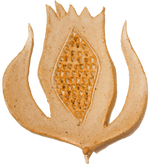Oak
Oak
£4.80
Oak details
Latin Name: Quercus robur
Group: Seven Helpers
Emotional Group: Despondency or despair
Chronic condition: Persevering
Method: Sun
Indication
For those who are struggling and fighting strongly to get well, or in connection with the affairs of their daily life. They will go on trying one thing after another, though their case may seem hopeless. They will fight on. They are discontented with themselves if illness interferes with their duties or helping others. They are brave people, fighting against great difficulties, without loss of hope or effort. [Bach: Twelve Healers and Other Remedies 1936]
Affirmation
Our whole object is to realise our faults, and endeavour so to develop the opposing virtue that the faults will disappear from us like snow melts in the sunshine. Don’t fight your worries: don’t struggle with your disease: don’t grapple with your infirmities: rather forget them in concentrating on the development of the virtue you require. [Bach]
Chronic Conditions
Oak is for the type of people who, although they feel hopeless of any cure, still struggle and are irritated that they are ill. These people have physical diseases which tend to go on for years and, although they feel quite hopeless about themselves, they still go on trying and struggling. The illnesses of this type are where much balance is lost, mental and physical. Mental, such as severe nervous breakdowns, or such types of insanity which can be described as completely unbalanced (where there is great loss of control); and the same in the bodily state, where the patient loses control over parts of the body or its functions. [Bach]
Habitat
General
The oak grows on neutral or lime-rich heavy clays and loams.
Britain
Oaks are native to Britain and grow throughout the country. Sessile Oaks predominate in the north and west on the poorer soils while Q. robur is more common in the south- east of the country. It is one of the most common native woodland trees.
Oak - Form and Function
It is fashionable to look upon the pattern of growth as an expression of the selfish gene, to see any characteristic as being evolved to further the selfish prospects of the individual species. With Oaks such an idea does not square with reality; functionalism is given the lie by this tree which adapts its behaviour to help others rather than oppose them. True the jays bury the acorns, just as do the squirrels and mice and in that they do a service to the Oak but this illustrates cooperation and not a selfish cunning. The same is true of other relationships throughout nature. The blue tit builds its nest in a hole in the Oak tree and then gathers the nearby insects to feed its young. The relationship between bird, food and nest is clear enough but the advantage does not accrue to the Oak, rather to life at large.
….At the end of it all we can look at the Oak tree and ask ourselves what was it that Bach saw and felt in you that gave a clue to this remedy state? These are people, he said, ‘who are struggling and fighting to get well…they will fight on…they are brave people, fighting against great difficulties.’ That is the Oak. It is the Oak tree and the Oak person: the gesture of the tree corresponds to the gesture of the emotional state. The emotional state corresponds to the tree. Those who take the remedy do not gain in strength and determination. They gain in understanding and that allows them to look afresh at the chronic life difficulty that they face. They begin to see a new way to grow.
£4.25/10ml
Ask us anything
We are happy to answer any questions you may have about our product.
You may also like
Subscribe to our newsletter
Promotions, new products and sales. Directly to your inbox.
Quick links
Contacts
01947 606565
totallynaturalskincare@outlook.com
152 Church street Whitby North Yorkshire YO22 4BH




